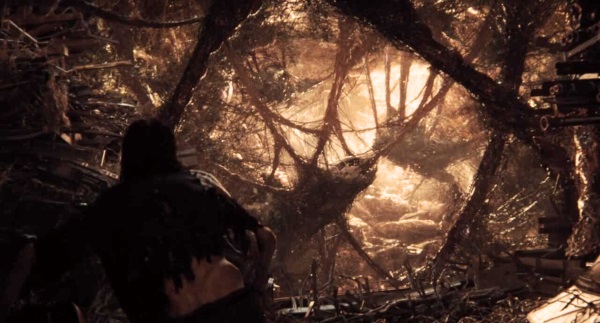Brief Analysis of "Beyond the Aquila Rift"
Ever since I can remember, I have had this fear of Space. Not so much of the possibility of aliens or life on other planets, but just of the depth and uncertainty that makes space so intriguing to some and horrifying to me. I remember my brother wanting to watch Martian and Arrival and Gravity. But just looking at the film’s cover photo would send me into this paralyzing spiral of anxious thoughts over what I would do if I ever found myself in Space. As irrational as I was (and still kind of am), I always have trouble watching or reading anything about Space. And while the short Beyond the Aquila Rift from Love Death and Robots is no different, something about it has my curiosity in Space piqued for the first time.
I’d first like to address the graphics in this episode. The realism employed by Alastair Reynolds is nothing short of mesmerizing. There are slight movements and visual differences from the ways humans may interact and move that bring you back to the idea that these characters are in fact manufactured and designed by a computer. However, these small details add more character to the episode and humanize the director/writer. Because the episode wasn’t filmed with real actors and was designed digitally, I found it easier to watch and enjoy without too much horror. The writer, Alistair Reynolds is also behind the Zima Blue story. This surprised me because there is such a stark difference both; in the storyline and appearance of each episode. Zima Blue is obviously a cartoon with unrealistic robots and humanoids while everything in Beyond the Aquila Rift is easier to imagine actually happening in the future. I really appreciate this writer’s ability to be flexible in his productions and appeal to different audiences because there is nothing easy about that.
Additionally, after some external research I learned that there was some foreshadowing towards how the episode would end. First off, a reflection of Greta’s true form could be seen through a glass bottle after Thom and Greta were sitting at the bar. And once she begins to explain that Thom is existing within a simulation, a shadow of the monster she becomes passes across the wall. It seems that as Thom grows more suspicious and inquisitive about what’s really going on, he breaks through Greta’s simulation bit by bit. From the way Suzy interacted with Greta upon being awoken for the second time, I am guessing she was awake before Thom and had already learned they weren’t really at the Samulaki Station in Schedar Sectar and are instead trapped in an alien death trap light years from home. Suzy’s violence towards Greta and the cut she gave her, help led Thom to the realization that things aren’t okay and eventually cause him to be shown the truth.
Despite the horrifying appearance of Greta as the spider alien monster with a hundred eyes, her care in developing a satisfying simulation for Thom (and presumably Suzy) demonstrates compassion and empathy contrary to what we would assume a hideous monster might display. This highlights a message we are all familiar with; to not judge a book by its cover. But in this case, Thom ha the unique chance to see the contents of the “book” that is Greta before seeing her cover and can therefore draw different conclusions regarding her true disposition. However, it isn’t too helpful because his panic convinces Greta to restart his simulation which I can guess, continues until Thom succumbs to his old age, malnourishment, and emotional distress.
To conclude, the realistic graphics, foreshadowing, and humanizing qualities of Greta aided in creating an incredibly engaging and intriguing story condensed into such a short amount of time. Although the thought of space still scares me in very irrational ways, I can understand how it interests so many and is often referenced in science fiction and any futuristic depictions.


HALL OF FAME!!!!!
ReplyDelete